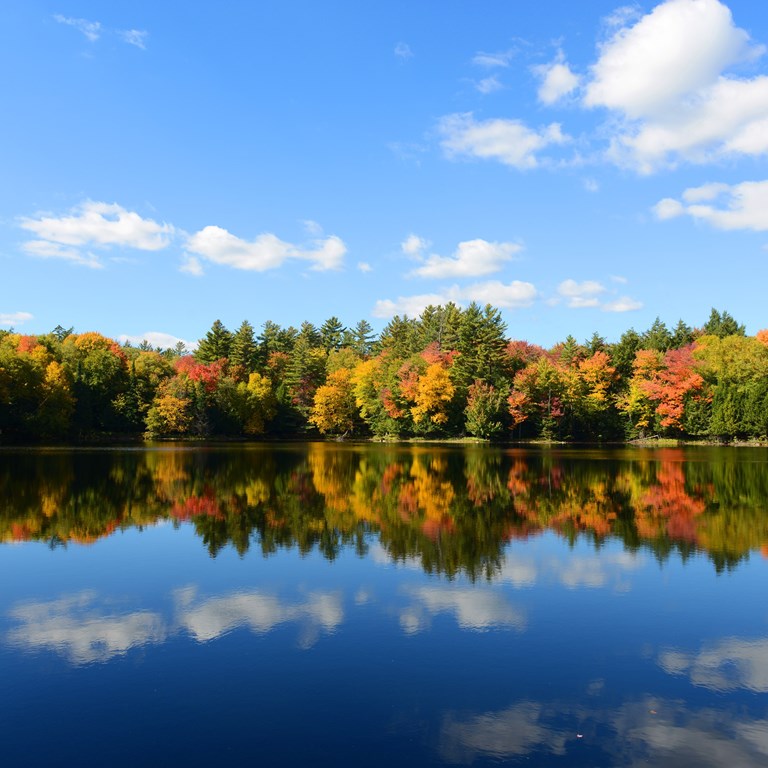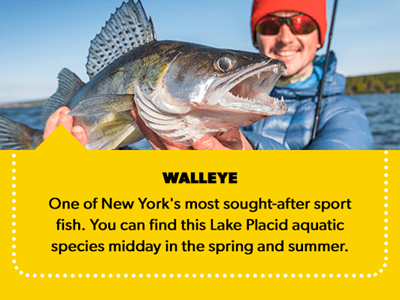Your cart is empty!
Make checkout easy by booking all your reservations at once. Add your sites from different campgrounds into your shopping cart* and then choose checkout.


When you visit the Adirondacks, your stay includes gorgeous mountain scenery and views of all the fascinating wildlife in Upstate New York.
From beavers along the shores of Lake Placid to black bears and moose camouflaged within the rich deciduous mountains, plan to spot an array of creatures while camping in this mountainous region.
Follow our seasonal guide to Adirondack wildlife for the best experience as you plan your trip. We’ll break down the best times of the year to view certain animals and some of the recreational activities you and your family can enjoy while gazing upon numerous animal species in the Adirondacks.
The Adirondack Mountains are home to various birds, amphibians and mammals that show up year-round or appear on the trails and lakes during specific seasons. Below, we’ll list some of the animals to see in the Adirondacks, including the seasons they're most active.
With more than 50 mammalian species in the Adirondack Mountains, you’re likely to see furry creatures ranging from tiny moles to giant black bears while camping. Get excited to observe mammals such as:
The Adirondacks may be known for its mountains, but it is home to just as many lakes, ponds, streams and wetlands filled with some of the region's most exciting wildlife:

No matter the time of year, you are bound to see gorgeous birds in the Adirondack Mountains. From spring arrivals in April and May to those who stick around in fall and winter, hike through evergreen woods vibrant with these birds' calls and colors:
The Lake Placid village of the Adirondacks is perfect for viewing plant and animal species in all their glory. Whether you’re visiting on your own or bringing the whole family along, enjoy a range of exciting activities at all times of the year while learning about this area’s wildlife.
Picnic along the shores of Lake Placid and watch as beavers build dams and create new areas for an array of plants and animals to move in. Hike along the short, easy Lakeshore Trail with the kids and learn about the area’s wildflowers, trees and animals from the illustrated signs placed along the path.
In the summer, enjoy swimming or kayaking on Lake Placid with its calm waters home to four different types of trout — rainbow, brown, lake and brook trout. Located on the northeast corner of Lake Placid, Mirror Like makes an excellent spot for fishing. Its shoreline is packed with rock bass, yellow perch and more.
Listen for the sounds of the pickerel frog along the shores of the lake or spot signs of the painted turtle emerging as the sun rises.
Mountain bike or hike through the beautiful orange and red trails during the fall months and bring your binoculars for spectacular bird viewing on the Pitchoff Mountain Trail. Be on the lookout for the Mourning Warbler or Black-Capped Chickadees as they make one last stop in the Adirondacks before their trip to the south for the winter.
Take a scenic drive along the Cascade Pass and view spectacular mountain sights surrounding you in all directions. Search for foxes, black bears and white-tailed deer roaming the forests along the way.
Winter in the Adirondacks has been famous for its cross-country skiing and other outdoor recreational activities since it was the host of the 1932 and 1980 Winter Olympics. Visit numerous ski centers where you can gaze upon the majestic mountains and cascade down the hills home to wild turkey, snowy owl and bobcat.
Be sure to keep an eye out for golden-crowned kinglet at this cold time of the year. Silence and patience are essential since tiny yellow-green bodies can be difficult to spot in dense evergreen forests. Listen closely for the sounds of their “teez teez” call when you venture into the woods and gaze in awe at the beautiful sights you see.
The best way to see Lake Placid wildlife is to camp nearby at the KOA Lake Placid / Whiteface Mountain campground. Rest up while discovering our massive wildlife landscape and enjoying a range of amenities perfect for you and your family.
Whether you’re visiting the Adirondacks for walleye, trout or salmon, enjoy numerous the KOA Campground and relax beside the beautiful waters of Lake Placid.
Reserve a stay and make KOA your basecamp while viewing wildlife in the Adirondacks, complete with hot water, an on-site pool and planned activities! Learn more about and call us to plan your stay today!

That doesn't mean this area has to always be empty. When you start reviewing camping options, your history will display here to help compare sites and find the best stay. You will be able to share your stay information with friends or family and save it for a later time if you have a KOA Account.
Make checkout easy by booking all your reservations at once. Add your sites from different campgrounds into your shopping cart* and then choose checkout.